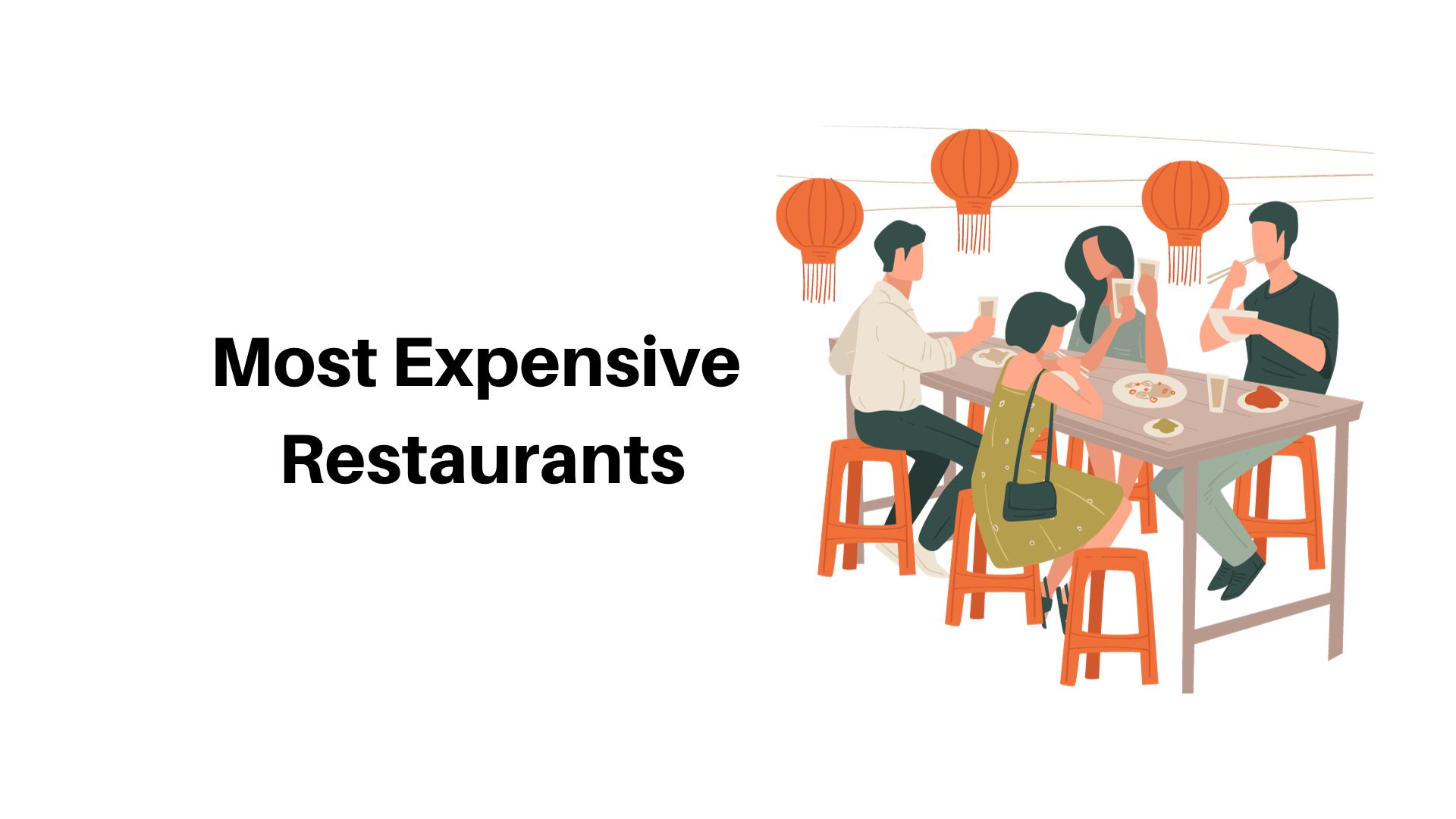Top 10 Most Expensive Coffee in the World (2023)
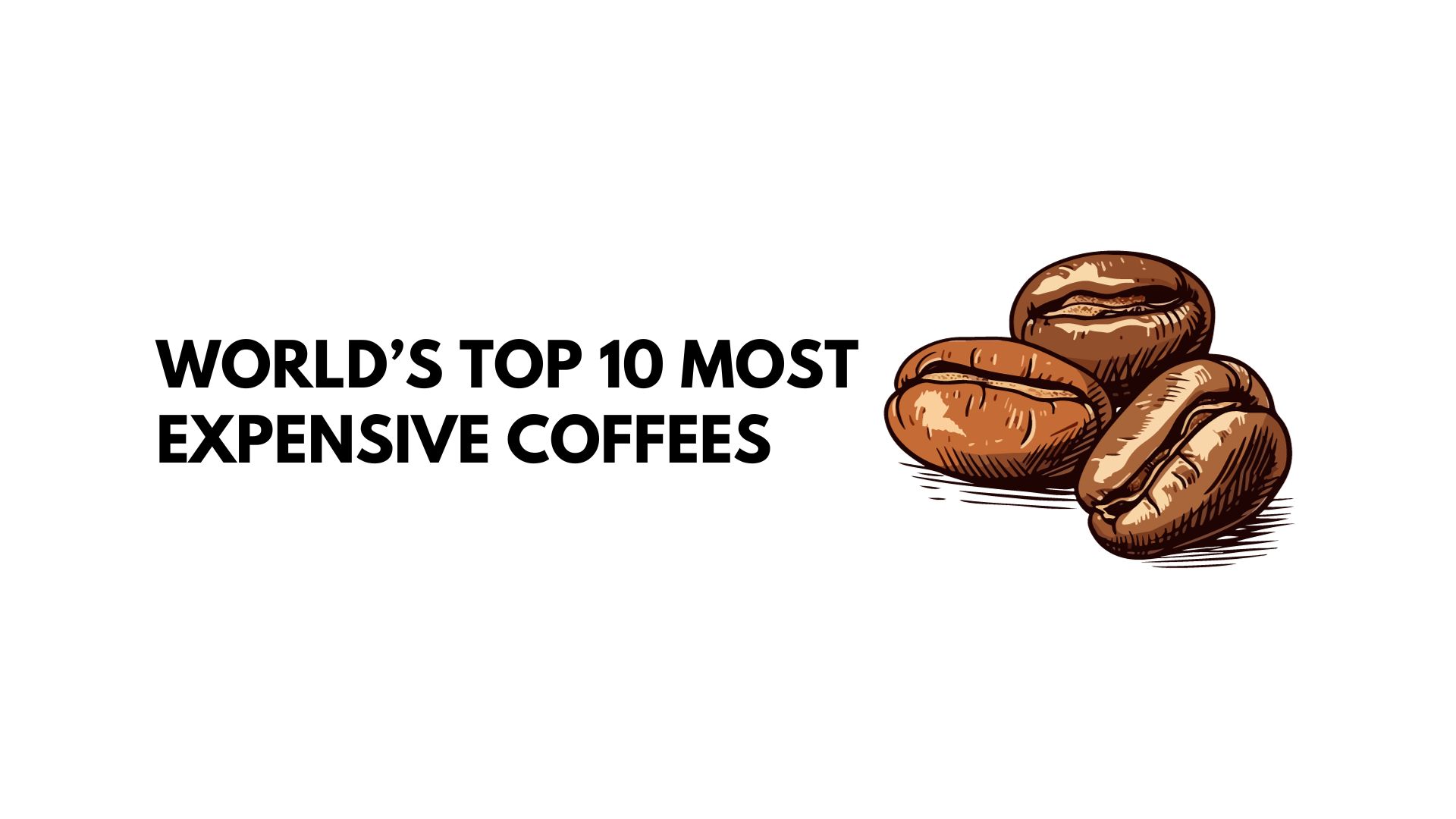
Page Contents
Top 10 Most Expensive Coffee – Freshly roasted seeds are used to make coffee; which can be served hot or cold. Originating in Ethiopia's highlands, coffee has spread around the world as one of the world's most beloved drinks. Caffeine, an effective stimulant found in coffee, helps enhance mental clarity and physical ability while providing plenty of oxidants as well as other beneficial substances that could benefit your well-being. There are various ways to prepare coffee, including drip, French press or cappuccino; you may choose plain or flavor it with flavors like chocolate or cinnamon along with milk/honey/both!
History of Coffee:
Caffeine was first cultivated in Ethiopian highlands when a goat herder noticed that his cattle had more energy after eating the fruit of an unfamiliar bush. Over time, mankind began cultivating this shrub – later named coffee – for its stimulating properties.
Coffee's origins in Ethiopia made it the first region of the Arab World to cultivate and prepare it as a beverage. From there, coffee spread throughout Arab culture, becoming an integral part of daily life. By the 16th and 17th centuries, it had even reached Europe – where wealthy elites adopted it for social gatherings. Coffee shops around the world became hubs for knowledge workers and businessmen alike.
Coffee's reputation grew over time, and by the turn of the eighteenth century, it had spread worldwide. Farms have been established in many countries around the world such as South and Central America, the Caribbean, and Africa. Thanks to modern infrastructure and industrialization that enabled shipping coffee across continents became much simpler.
However, there was some criticism surrounding the expansion of the coffee business. Especially during colonial expansion, mistreatment of farm laborers occurred. Furthermore, many smaller growers and manufacturers faced an obstacle as the global coffee market was often controlled by large corporations with influence over pricing and marketing strategies.
Coffee remains one of the world's most beloved drinks despite these challenges. The top three exporters of caffeine now are Brazil, Vietnam, and Colombia; coffee is produced in over 70 modern countries and is estimated to be consumed daily in over 2.25 billion cups worldwide. The distinct tastes and processing techniques unique to each cup reflect the diversity of cultures that both make and enjoy it.
Types of Coffee
- Cappuccino
- Latte
- Espresso
- Filter Coffee
- Iced latte Coffee
- Americano
- French Press
Popular coffee Brands
- Starbucks
- Tim Hortons
- Dunkin
- Lavazza
- Caribou Coffee
- Green Mountain Coffee
- Folgers
- Illy
Cultural Importance of Coffee
Coffee has been an integral part of society for millennia; its unique taste and stirring increase gaining worldwide appreciation. It has become a national icon; deeply embedded in history and ritual across numerous nations.
Coffee is often offered to visitors as a sign of hospitality and greeting in several cultures, where it is seen as an embodiment of kindness. Families and close friends gather around coffee shops or restaurants around the world to enjoy this sociable beverage with unique processing techniques that capture both its past and present flavors. In some places; coffee has even become part of people's collective psyche – providing them with something special to remember!
Italian coffee is often served with a strong espresso shot, which can be enjoyed while waiting at a coffeehouse. Turkish espresso, on the other hand; is typically made with Turkish delight or other treats and prepared in what's known as a cezve pot. Furthermore; Ethiopia's coffee ceremony – including several traditions for making and pouring it – has become an integral cultural institution since it was first consumed there.
Furthermore; coffee has played an essential role in many artistic and cultural movements. Cafes became popular hangouts throughout Europe during the eighteenth century as philosophers and creative types congregated there to discuss poetry; philosophy; and artwork over a hot beverage. Today these coffee shops and cafes remain attractive destinations for creative types with many hosting poetry slams or live musical entertainment.
Coffee has long been associated with a special way of life in many cultures around the world. At work; colleagues gather for an espresso and chat during “break time,” which is an integral part of their job in many countries around the world. Preparing and drinking a cup of coffee is seen as a way to relax and unwind; in these other places, it's seen as an invitation to slow down and appreciate life more fully.
Coffee's widespread influence can be seen in its many regional variations and customs. Due to its role in tourism, as well as its associations with socializing and artistic trends; coffee has become deeply embedded into many societies and cultures around the world.
Economical Reference
Coffee's global valuation exceeds USD 100 billion, making it a major contributor to the world economy. Most of its production takes place in poorer nations, making it one of the primary commodities globally. Many individuals work within this industry – from local producers and merchants to processors and consumers.
In 2020, The International Cocoa Group projects that export earnings will total USD 20.1 billion for developing nations – with Brazil leading the charge. Many emerging economies rely heavily on coffee production as a major component of their economies; more than 30% of Ethiopia's economic output and more than 50% of Burundi's exporters are coffee producers.
Nonetheless, there can be significant price swings in the coffee market due to factors like climatic conditions, civil unrest, and shifts in global demand. For coffee producers who must regularly deal with fluctuating incomes due to unpredictable costs and income fluctuations; this presents major obstacles. Furthermore, climate changes and inappropriate farming techniques harm productivity levels which could put harvesting crops at risk long-term.
Despite these obstacles, the coffee business continues to make a substantial contribution to global economic growth and progress in developing nations as market demands for specialty and responsibly produced coffee grows. There is potential for this industry to continue supporting economic development and progress within those nations as production increases.
Why Coffee is so Expensive?
- Specialized Robusta beans are considered premium coffee, typically costing more due to their superior qualities and enhanced aroma profile. These beans must be carefully grown and processed due to being often produced at high elevations, increasing the cost of production.
- Due to the limited automation in coffee cultivation, production costs can be higher in less developed nations. Furthermore, costs associated with growing and transporting the beans may increase due to difficult topography or limited infrastructure availability in certain locations.
- Some coffee bean varietals may be considered more valuable due to their rarity or scarcity. For instance, Jamaican Blue Mountain espresso is considered one of the world's most expensive coffee due to its distinct aroma and diminishing supply.
- The cost of caffeine may also differ based on the processes employed. Some coffee beverages require more time-consuming and costly steps such as natural cleaning or nectar treatment, which could increase their price altogether.
- Demand has an effect on coffee prices just like any other commodity. A particular type of bean may cost more when there's a high demand for it. Caffeine prices can also shift due to factors like weather systems, civil unrest, or changes in customer preferences.
World’s Top 10 Most Expensive Coffee
- Black Ivory – Worth $1000+ Per Pound
- Finca La Injerto – Worth $500+ Per Pound
- Hacienda La Esmeralda – Worth $350 Per Pound
- Kopi Luwak – Worth $160 Per Pound
- Helena – Worth $79 Per Pound
- Molokai – Worth $51 Per Pound
- Jamaican Blue Coffee – Worth $50 Per Pound
- Fazenda Santa Ines – Worth $50 Per Pound
- Los Planes Coffee – Worth $40 Per Pound
- Hawaiian Kona Coffee – Worth $35 Per Pound
#1. Black Ivory – Worth $1000+ Per Pound
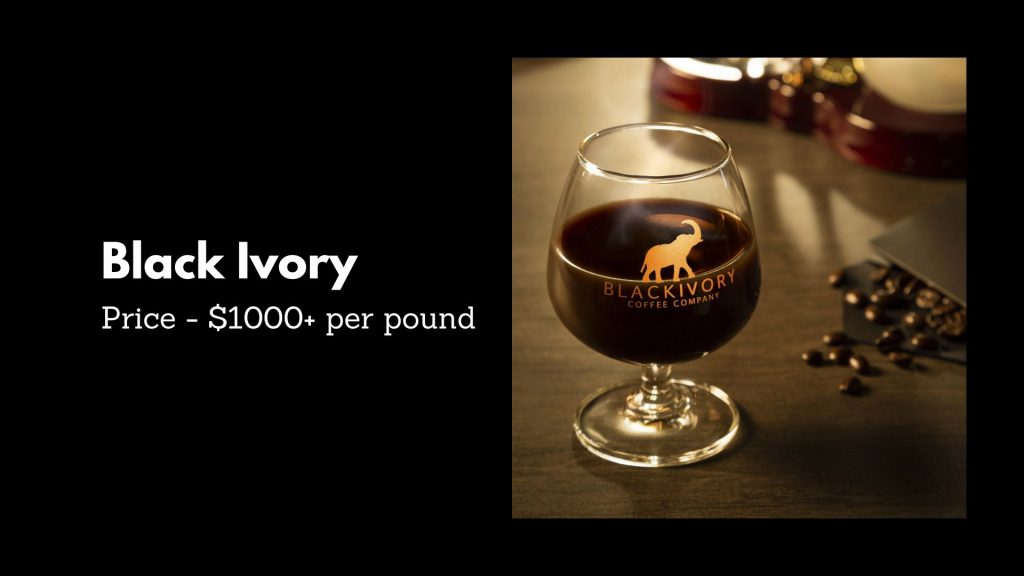
Black Ivory Coffee is the priciest coffee available worldwide, with prices ranging from about $1,000 per pound up to an eye-watering $1,500 per pound. Black Ivory Coffee Company, situated in Northern Thailand, has created an unusual method of freshly brewed coffee that may be difficult for some individuals to comprehend. Much like Kopi Luwak beans before it, their product offers an intriguing taste experience that cannot be replicated elsewhere. Black Ivory Coffee produces caffeine on their farm by giving Arabica berries to elephants, who then extract the seeds from their stool after consumption and decomposition of the berries. Animal digestion allows seeds to absorb different flavors as they disintegrate unwanted proteins that give Black Ivory Coffee its characteristic taste. By employing this process, Black Ivory Coffee guarantees a silky and tasty morning beverage – at an increased cost of $1,000 a pound due to each pound's unique value.
#2. Finca La Injerto -Worth $500+ Per Pound
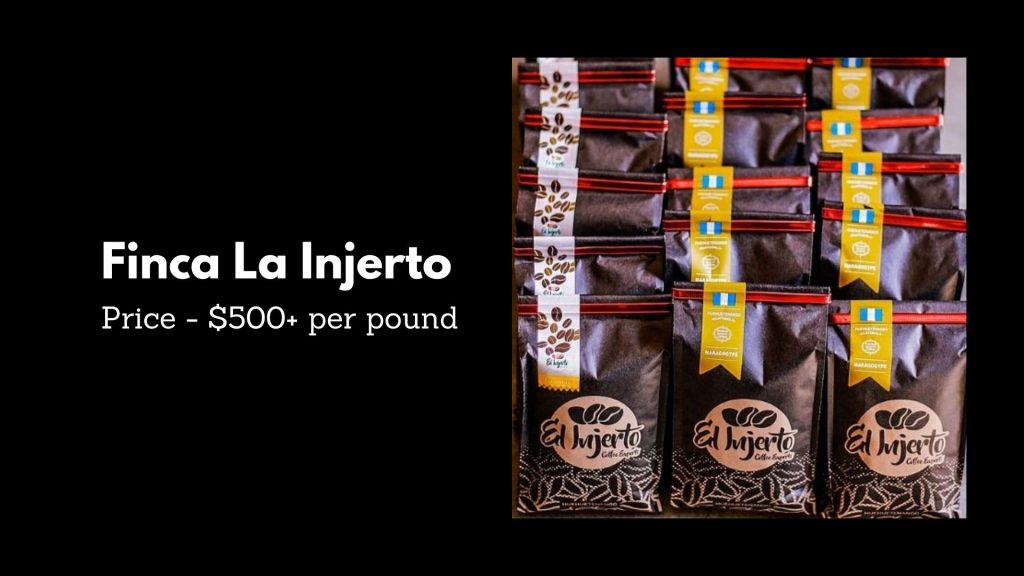
Finca El Injerto is the second-highest priced coffee in the universe; selling for an eye-watering $500+ a pound. This coffee's rare cherries contribute to its pricey reputation; as such; it has placed second four times and won multiple cups of excellence – providing further evidence as to why caffeine should be so costly.
Finca El Injerto's bleaching process is truly unique; collapsing legumes repeatedly while cleaning them in one continuous stream. As such; coffee enthusiasts and specialists worldwide have become enamored with this label – willing to pay up to $500+ for it.
#3. Hacienda La Esmeralda – Worth $350 Per Pound
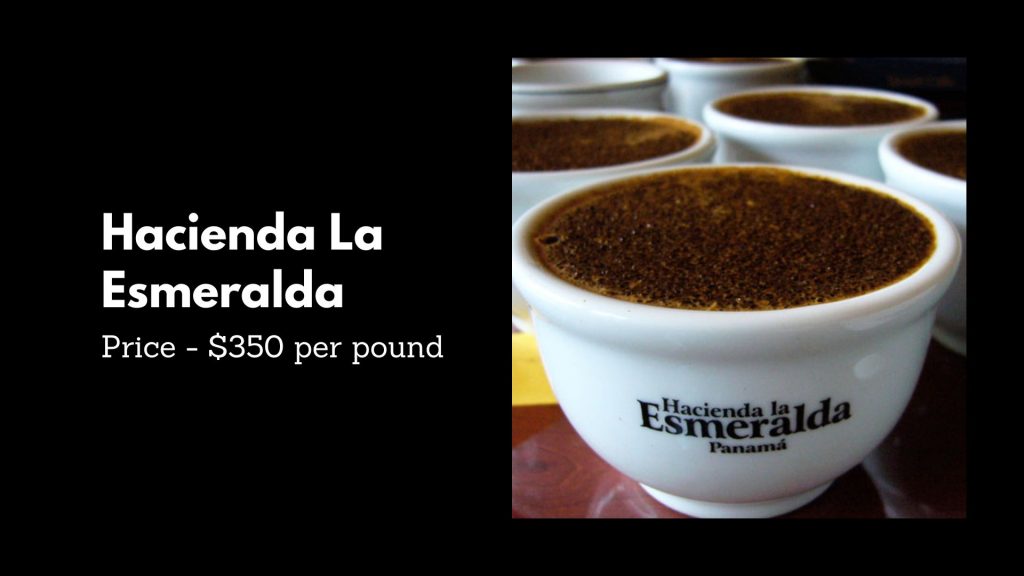
Hacienda La Esmeralda ranks third on the world's most expensive coffee, having previously auctioned off its beans at $350 per pound in an earlier bidding process. This solidifies their place as one of the premier producers and allows them to command an appropriate price point.
On the Panamanian portion of Mount Baru, coffee beans are grown under the shade of guava trees. This success has been achieved through generations of experience and expertise in producing large surpluses with meticulous attention to purity and hard work – earning Hacienda La Esmeralda numerous accolades and contests throughout centuries.
#4. Kopi Luwak – Worth $160 Per Pound
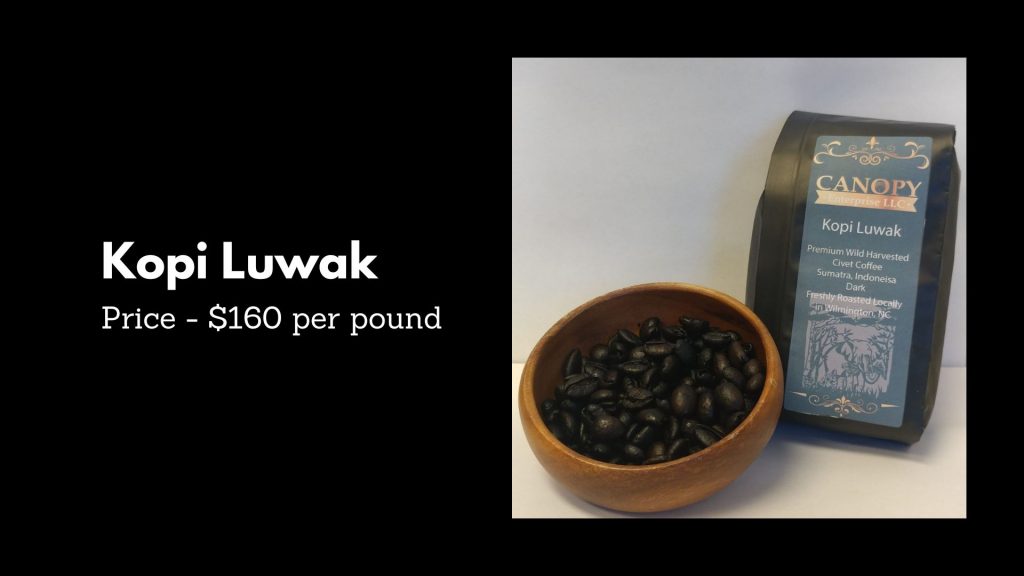
Kopi Luwak, one of the world's most beloved coffees, costs approximately $160 per pound and stands out due to how it is produced. In Indonesia, this delectable treat is produced by feeding delicious fruit to Asian Palm Civets-tiny carnivorous rodents-then waiting for them to urinate and empty their grounds. As they consume the beans, these strange creatures degrade them while creating chemicals that give the seeds their distinctive taste.
Every year, Kopi Luwak draws millions of tourists to Indonesia to sample its famous coffee. Sometimes referred to as civet coffee in honor of the animal, this specialty coffee has become one of Indonesia's biggest draws.
#5. ST. Helena – Worth $79 Per Pound
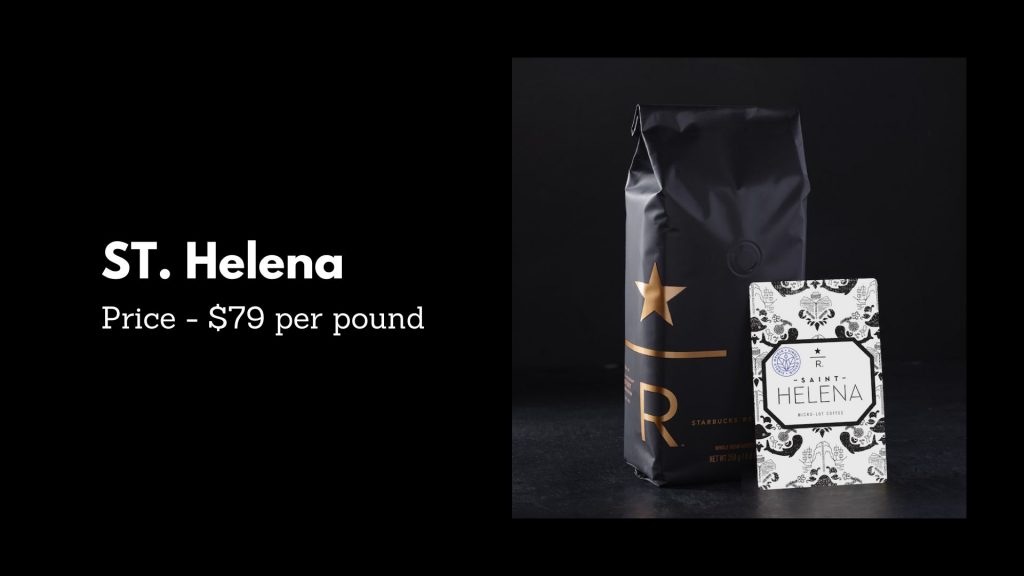
St. Helena beans have an estimated market value of approximately $79 per pound; making them the fifth most valuable beverage worldwide. Situated 1,200 miles off Africa's west coast in the North Atlantic; St. Helena is famous for housing Napoleon Bonaparte there. Geographic location plays a significant role when cultivating beans around the world – different countries have distinct topographical positions which influence farming practices accordingly.
Exporting coffee can be costly both culturally and geographically; yet its unique aroma continues to draw large support, enabling companies to charge more for products that consumers appreciate.
#6. Molokai – Worth $51 Per Pound
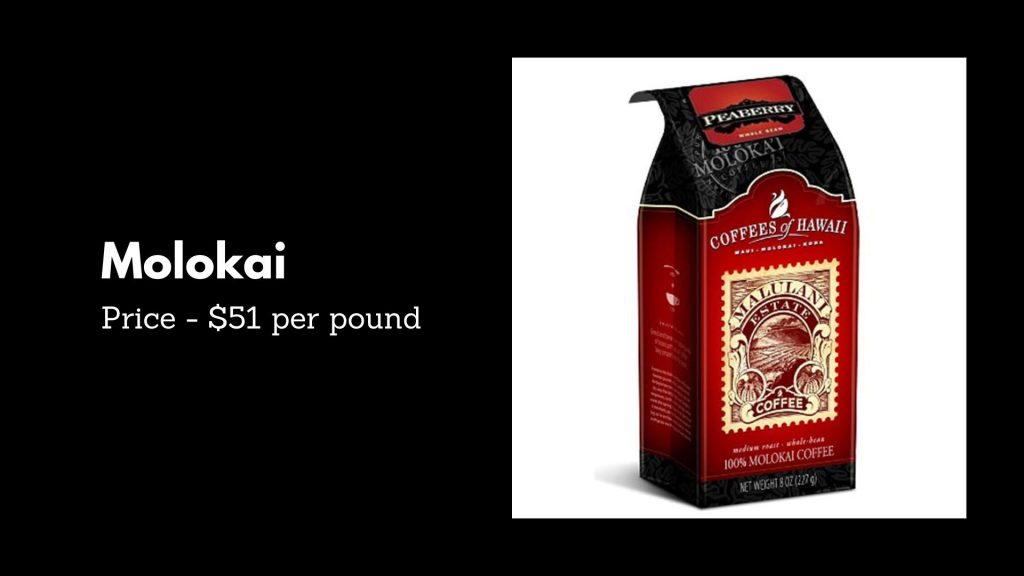
Molokai coffee; grown in Hawaii – which is one of the highest-producing states for coffee production – has earned itself a place among the finest examples of Hawaiian caffeine available today.
Kualapu'u, Maui County offers the ideal climate for growing Moloka'i coffee. Thanks to decades of expertise and perfection; this bean can now be sold at an impressive $51 per pound.
#7. Jamaican Blue Coffee – Worth $50 Per Pound
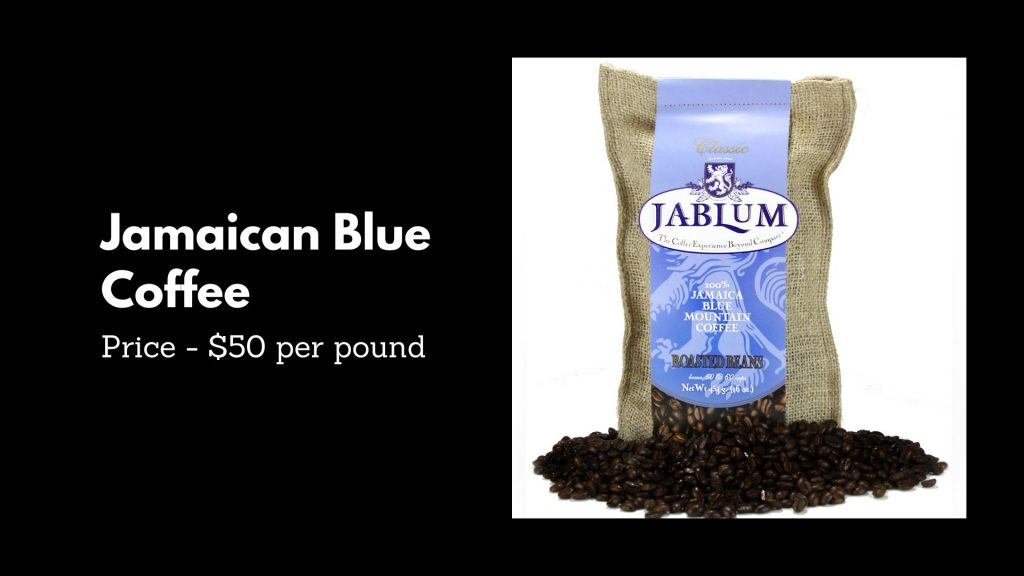
Jamaican Blue; priced at $50 a pound, is grown at an elevation of 5,000 miles in the Jamaican Peak District. Here; coffee cherries are cultivated on treated terrain that receives timely precipitation each year to foster seed development. As such, Jamaican Blue tends to have neither an unpleasant taste nor an early sharpness.
Jamaican Blue has seen unprecedented success in Japan; with most of the company's distributors now being Japanese. It remains unknown why this has occurred, but it could be due to its distinct flavor which appeals to those who do not adore strong coffee flavors
#8. Fazenda Santa Ines – Worth $50 Per Pound
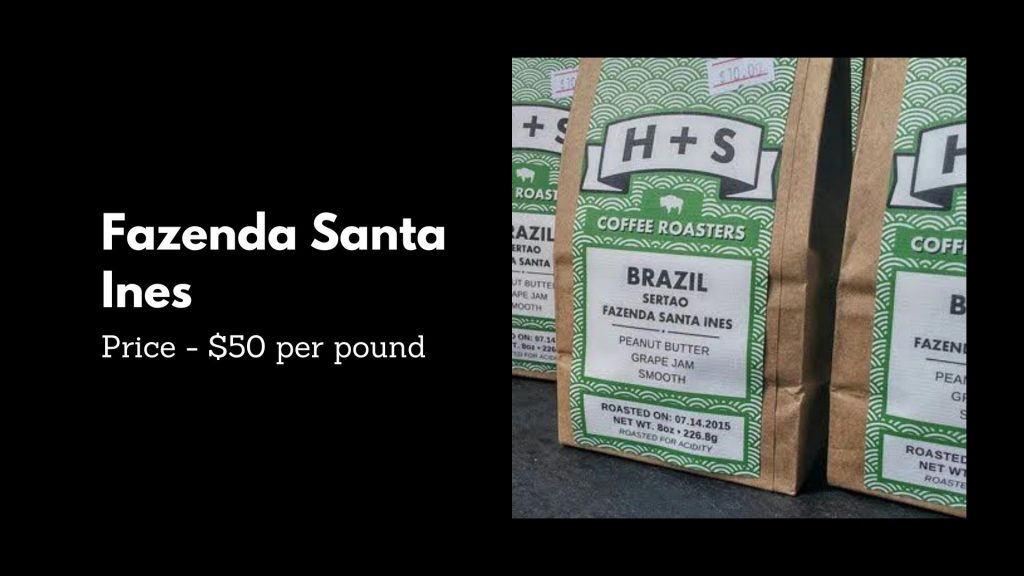
Fazenda Santa Ines; a Brazilian unroasted bean that sells at about $50 per pound, follows. Grown at the foot of Mantiquera hills in Brazil; this bean has become renowned for its delectable taste.
Fazenda Santa Ines has demonstrated its coffee production expertise for more than 100 years; which may explain why its market value of $50 per pound is so high. At the 2009 Cup of Excellence tournament; it finished 8th out of 24 brands. Customers rave about this mug's great value at such a discounted rate.
#9. Los Planes Coffee – Worth $40 Per Pound

Los Planes Coffee Plantation of El Salvador has achieved the distinction of being the first caffeine in the ranking to do so: they placed second in 2006's Cup of Excellence competition and seventh the following year.
Los Planes Coffee boasts an exquisite range of flavors, such as orange with caramelized and brown sugar strands. Although priced at an eye-watering $40 per pound, Los Planes has managed to win over a loyal following of customers who appreciate its distinct tastes and pleasant aroma. Rated the eighth most premium caffeine in the universe; Los Planes coffee truly lives up to its name!
#10. Hawaiian Kona Coffee – Worth $35 Per Pound
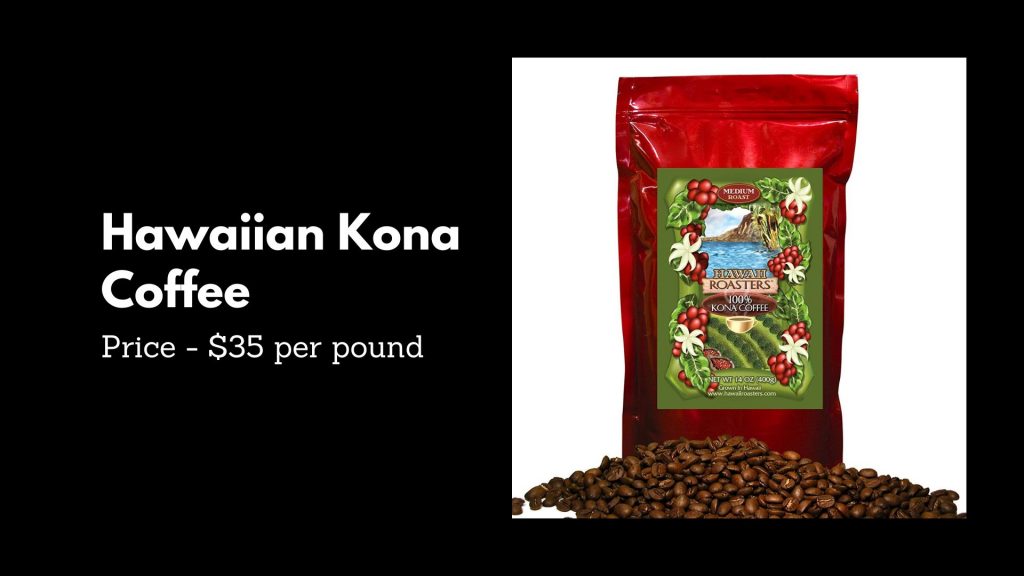
Hawaiian Kona coffee stands out for its exceptional texture and aroma. Crafted using a special type of seeds, each pound typically costs around USD 35.
Where to Purchase Hawaiian Kona Coffee? Unfortunately, Kona coffee is only occasionally sold separately from less expensive varieties; sometimes vendors will mix both types to create their blend. Enjoy 100% Kona coffee for the true flavor of Hawaiian coffee – only 10% cheaper!
You may also Like World's Top 1o Most Expensive:
- Top 10 Most Expensive Starbucks Coffees In The World
- Top 10 Most Expensive Foods in the World
- Top 10 Most Expensive Fruits in the World
Conclusion:
Coffee consumption has become an integral part of many people's daily routines. Not only is it a beloved beverage, but also an enormous global product with tremendous cultural significance and economic impact. Coffee's roots lie in Ethiopia, and it has since spread to countless other nations worldwide.
Nowadays, consumers enjoy various ways of drinking their caffeine fix – from traditional filter coffee to unique decaf espresso drinks such as iced coffees and lattes. Coffee offers a wide variety of preparation options and bean varieties to suit any personal taste, making it the ideal beverage for social occasions.
From meeting friends at a cafe to having coffee with coworkers during break time, caffeine plays an integral role in many cultures around the world as an adaptable and popular drink that promotes social connection.

Aditi is an Industry Analyst at Enterprise Apps Today and specializes in statistical analysis, survey research and content writing services. She currently writes articles related to the "most expensive" category.


